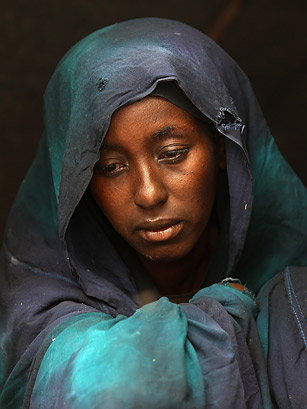
A displaced Somali
The Horn of Africa seems to be one of the most perennially unstable parts of the world, plagued by myriad insurgencies, Islamist extremism and the frailty of the Somali government in Mogadishu. Deepening the sense of crisis in the region this year was a terrible drought — the worst, by some accounts, in more than 60 years. In July, the U.N. declared much of southern Somalia to be in a state of famine — a complicated calculation that, among other metrics, states that over 30% of the local population faces acute malnutrition — not a term to be taken lightly. Hundreds of thousands of starving Somalis fled to refugee camps on the Kenyan border at a rate of more than 1,000 a day. The camp at Dadaab, already the world's largest sanctuary for refugees, was overwhelmed. Relief efforts in much of southern Somalia have been complicated by the dominance there of al-Shabab, an Islamist militia linked to al-Qaeda. While U.N. officials are wary of providing an exact death toll from the famine, some estimates place the figure in the tens of thousands.